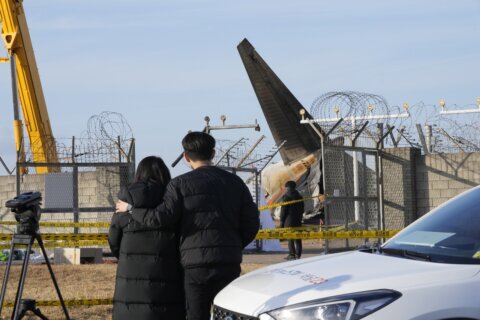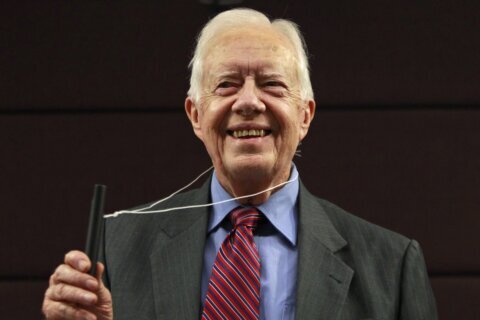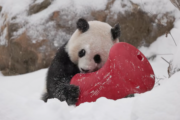The World Health Organization’s preliminary report into the origins of the novel coronavirus will recommend more extensive contact tracing of the first known patient with Covid-19 in Wuhan, China, as well as the supply chain of nearly a dozen traders in the Huanan seafood market, which is thought to have played a role in the early spread of Covid-19 in late 2019, according to investigators familiar with the draft report.
Independent scientists told CNN the rudimentary investigative work being recommended should have been done many months previously by Chinese scientists looking into the virus’ origin. They said they found it “surprising” and “implausible” Chinese scientists had not already done that work.
The panel’s recommendations will pursue, among others, two key lines of inquiry, the investigators familiar with the draft report told CNN.
First, they will request further work on the contact history of the December 8, 2019, patient in Wuhan, the first case confirmed by Chinese scientists and the WHO panel as having Covid-19. The patient has not been identified publicly, but is, according to the WHO investigators, an office worker in his forties with no exotic travel or contact history, who lived with his wife and child.
Peter Daszak, a member of the 17-person WHO team and president of EcoHealth Alliance, which tracks viruses in animals, said the investigation had established the first known patient’s parents had likely visited a market selling wildlife in Wuhan.
The patient met the WHO team, Daszak said, and at the end of the meeting added that his parents had visited “a local community wet market in Wuhan”, which was not the Huanan seafood market.
Daszak said the WHO panel were not told the details of the market during their visit, and it was possible it sold animals or produce that could have been infected with the novel coronavirus.
“Then he said at the end of the interview — and it was all being translated and the translator, specifically said — ‘My parents visited a local community wet market,'” Daszak said of the meeting.
“Now, to use the term ‘wet market,’ especially under this political constraint we were under, tells me something very significant: that the other markets in Wuhan — not [only] Huanan market, other markets — sold wildlife products,” Daszak said.
In China, a “wet market” is a term used to describe a venue selling a wide range of fresh produce, which can include live animals.
Daszak said the Chinese scientists, looking into the case as part of the government’s response, assured the WHO team the patient’s parents had tested negative for the disease, yet the Chinese did not appear to have traced the parents’ contacts in that market.
“If you find out the patients are negative, it is not obvious to contact-trace them. But it is worth doing now because we understand something of the spread of Covid around Wuhan,” Daszak said.
This patient had no known connection to the Huanan seafood market, the wet market believed to be connected to the virus’ early spread, according to Daszak, and “lived a typical urban life. He did not do crowded sporting activities. His main hobby was surfing the internet.”
The leader of the WHO mission, Peter Ben Embarek, declined to comment on the details of any further contact tracing or testing that is needed. He told CNN: “Further studies are needed.”
Other scientists expressed surprise and even disbelief that the further investigations, into both the first patient’s contact history and the supply chain to the Huanan market that the WHO sought, had apparently not already been performed by China.
Professor Maureen Miller, an infectious disease epidemiologist at Columbia University, said: “It’s implausible that this research has not been done. It’s not realistic, given they have world-class scientists there, and the technology invested in over the last 20 years. They are sophisticated, they understand transmission pathways, and have been working on them for years.”
Miller said the December 8 patient’s infection — without any direct contact to wet markets or exotic travel — showed there was already community transmission of the virus in December. “In the short and long term, it is detrimental to China to try to hide the fact that this virus started in China and was exported around the world,” she said.
Professor Yanzhong Huang, senior fellow for global health at the Council on Foreign Relations, said it was surprising China “hasn’t invested in investigating two important clues like that.” He added the country had recently mobilized the entire city of Beijing to find the source of a Covid-19 outbreak.
“They have top-notch scientists, who are much more knowledgeable than most in terms of recognizing the importance of this information,” he said. Huang said the WHO recommendations showed they were “uncovering some interesting information tracing of the origins of the virus.”
CNN explained the panel’s recommendations to Miller and Huang as part of seeking their reaction.
The Chinese Ministry of Foreign Affairs (MOFA) and National Health Commission did not respond to a request for comment. Hua Chunying, spokeswoman for MOFA, told reporters on February 18 that an independent report on the coronavirus’ origins “doesn’t mean bowing to the Western approach towards China based on presumption of guilt.”
She added: “China has conducted a very thorough, professional, science-based study with the WHO experts,” and insisted the WHO panel was satisfied with China’s cooperation. Hua continued to push for studies of the virus’s emergence outside of China — a claim for which there is little evidence.
The second recommendation
In their preliminary report due next week, the WHO panel will also recommend the immediate investigation of the supply chain of the Huanan seafood market, according to the investigators familiar with the draft report.
Daszak said Chinese scientists gave the WHO team a list of farms in the southern provinces of Yunnan, Guangxi, and Guangdong which supplied the Huanan seafood market in Wuhan with wildlife.
“There will be recommendations that will include going down to those farms, testing farmers, interviewing and testing relatives, and finding out if there is any evidence that there were outbreaks down there before Wuhan,” Daszak told CNN.
Daszak described the recommendation as a “priority” over which there was consensus between the WHO mission and the Chinese scientists working with them. Daszak said Chinese scientists had visited wildlife farms in and around the central province of Hubei, and some “upstream suppliers,” but not the southern farms he and the WHO team would be “most interested in.”
Testing the supply chain would enable scientists to see which animals — or humans — could have passed the virus between them, before it infected humans in Wuhan. “Probably a spillover event happened, a little bit earlier, in November, or maybe even October,” Daszak said, referring to the moment in which the virus passes from one species to another.
“No one has been there to test the animals,” Daszak said. “The farms are now closed.”
Daszak added the Chinese traceback team studying the origin of the outbreak might have been impeded in this work by the lockdown that gripped China in early 2020.
The farms are likely “a clear pathway to this virus,” Daszak said. “We now know there were supplies of wild animals bred on farms in Yunnan Province, Guangxi and Guangdong going into Huanan market. We’ve got the evidence and we have got the data.”
“We need to find out what other products those farms were selling,” he added. “Were they selling animals that could be infected by SARS coronaviruses — including SARS-CoV-2? Animals including rabbits, ferret badgers, civets?”
SARS-CoV-2 is the virus that causes Covid-19.
“You can do that by interviewing farmers. They’ve got nothing to lose. They’ll have closed up their business and moved on in their lives, and there was nothing illegal about what they were doing,” Daszak said.
Daszak said the southern province of Yunnan was of particular interest, as this is where one of the closest genetic relatives of the SARS-CoV-2 virus — known as RaTG13 — has been found in bats.
The urgent hunt among zoologists is to determine whether — or how — the RaTG13 virus may have mutated over time to become SARS-CoV-2. China’s southern provinces are home to many species that are also susceptible to the SARS-CoV-2 virus.
These animals from southern farms could have eventually made their way to the Huanan seafood market in Wuhan, Daszak said. Chinese scientists had taken samples from the Huanan wet market over the month of January 2020 from the carcasses of dead fish and other aquatic animals, but not from live species, he said. Some of the animals in the market were dead and frozen, he said.
“In that batch of stuff from the freezers were rabbits”, said Daszak, and ferret badgers. “They were negative”, he said, but added that only a few were tested. “We do not know what else was going into that market.”
Daszak said the results of this study have not been published by Chinese scientists, and has only been shown to the WHO expert team.
He said the path to the market of the virus from the southern farms was a plausible theory for its origin.
“We do not have clear definitive proof, but this is much more likely than any other pathway we’ve looked at,” he said.







